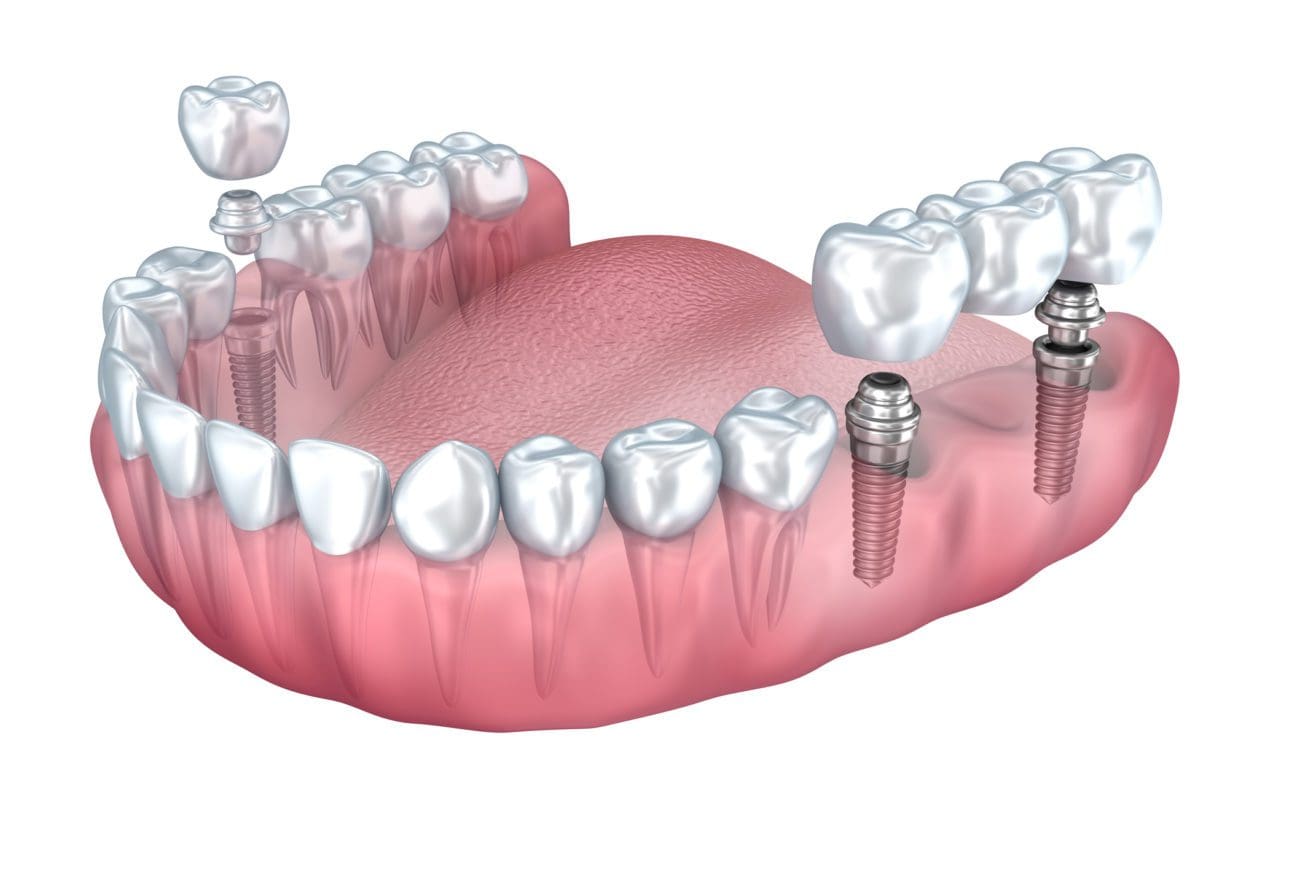The 10-Minute Rule for Dental Sense
The 10-Minute Rule for Dental Sense
Blog Article
The smart Trick of Dental Sense That Nobody is Discussing
Table of ContentsThe Basic Principles Of Dental Sense Excitement About Dental SenseHow Dental Sense can Save You Time, Stress, and Money.Dental Sense for Dummies
are clinical tools operatively dental implanted right into the jaw to bring back a person's ability to eat or their appearance. They supply assistance for synthetic (phony) teeth, such as crowns, bridges, or dentures. When a tooth is lost as a result of injury or illness, a person can experience complications such as rapid bone loss, defective speech, or adjustments to eating patterns that lead to discomfort.Dental dental implant systems contain an oral implant body and dental implant abutment and might additionally include an abutment addiction screw. Kids dental. The dental implant body is surgically placed in the jawbone in place of the tooth's root. The oral implant joint is generally affixed to the dental implant body by the abutment fixation screw and expands through periodontals into the mouth to sustain the connected man-made teeth
(https://www.avitop.com/cs/members/dentalsense1.aspx)Structure of The Dental Implant System choosing dental implants, speak with your oral service provider regarding the potential advantages and threats, and whether you are a candidate for the procedure. Points to consider: Your overall health is an important variable in figuring out whether you are a great candidate for dental implants, the length of time it will certainly require to heal, and the length of time the implant might remain in place.
Smoking may influence the healing process and lower the lasting success of the implant. The healing procedure for the implant body might take numerous months or longer, throughout which time you commonly have a momentary joint in place of the tooth. the dental implant treatment: Very carefully adhere to the oral health guidelines offered to you by your dental provider.
The Best Guide To Dental Sense
Implant failing can result in the need for another operation to fix or replace the dental implant system. Restores the capability to eat Brings back cosmetic appearance Assists maintain the jawbone from reducing as a result of bone loss Preserves the health and wellness of the surrounding bone and gum tissues Helps keep adjacent (nearby) teeth steady Improves lifestyle Damages to bordering natural teeth throughout implant positioning Injury to the surrounding cells throughout surgical procedure, such as sinus opening Injury throughout surgery (as an example, crack of surrounding jawbone) Inadequate feature, such as seeming like the teeth do not attack together typically A feeling that the tooth is loose or turning in area resulting from an abutment screw loosening Implant body failure (looseness of the dental implant body) because of systemic infection, which may be more probable in patients with unchecked diabetes mellitus because of regional infection in bone and gums over here supporting the implant body because of delayed healing, which may be most likely in patients that smoke Trouble cleaning the gums around the implant, causing poor dental hygiene Unattended periodontal condition Post-surgical pins and needles because of nerve impingement or damages Constantly inform health treatment companies and imaging service technicians that you have oral implants before any type of magnetic resonance imaging (MRI) or x-ray treatments.
FDA is not knowledgeable about any negative occasions reported for MRI or x-ray procedures with dental implants. Oral implants systems are normally made from materials that follow international agreement standards of the International Organization for Standardization (ISO) or ASTM International. These criteria have information of what makes a safe material.

An oral implant is a structure that changes a missing out on tooth. With screw-like devices, the specialist inserts a dental implant right into the jawbone, and it functions as a support for a synthetic tooth, called a crown. A gadget called a joint links the fabricated tooth to the dental implant. The crown is personalized to fit the individual's mouth and match the color of their teeth.
Fascination About Dental Sense
Some individuals are not eligible for oral implant surgery. It is for oral surgeons to run on people with: acute illnessuncontrollable metabolic diseasebone or soft tissue illness or infectionIf these problems are fixed, an individual can have the surgical procedure. In, oral doctors abstain from operating on people with: If people with any of the above undergo dental implant surgical treatment, there is a higher risk of the implant stopping working.

Oral implant surgery is a customized process. It's not the exact same for everybody. The following gives a basic summary of what you can expect your dental professional, oral cosmetic surgeon, periodontist or prosthodontist to do: Put the implant operatively. Give you time to recover. Affix the post and last crown, bridge or denture.
Next, your cosmetic surgeon will carefully put the oral implant into your jaw. Ultimately, your surgeon will certainly reposition your periodontals and close the cut with stitches. If your implant is near the front of your mouth, your dental professional will make a temporary tooth for you to wear till you recover. By doing this, you will not have a gap in your smile while you recover.
All About Dental Sense
Your copyright can tell you what to anticipate in your scenario. Throughout the healing phase, your jawbone should fuse to the dental implant. This procedure, called osseointegration, is vital for stability and long-term success. This procedure can take anywhere from three to nine months. In many cases, it may take longer.
Once your dental implant heals, your dental practitioner can connect the abutment (small connector message) and your final restoration (crown, bridge or denture). This normally takes about one hour to finish and may need a 2nd minor surgery. You should not feel any kind of pain during your oral implant procedure because your supplier will certainly make use of medication to numb your gum tissues.
Report this page